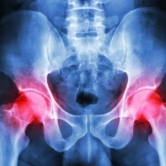Stress-Related Headaches Don’t Need to Control Your Life Any Longer
Did You Know Physiotherapy Could Help with the Pains of Stress-Related Headaches? Can you feel it? Starting with tension in your neck or shoulders and creeping upward through the base of your skull? You may have even tried stretching and optimizing your workstation, but if you are suffering from stress-related…




